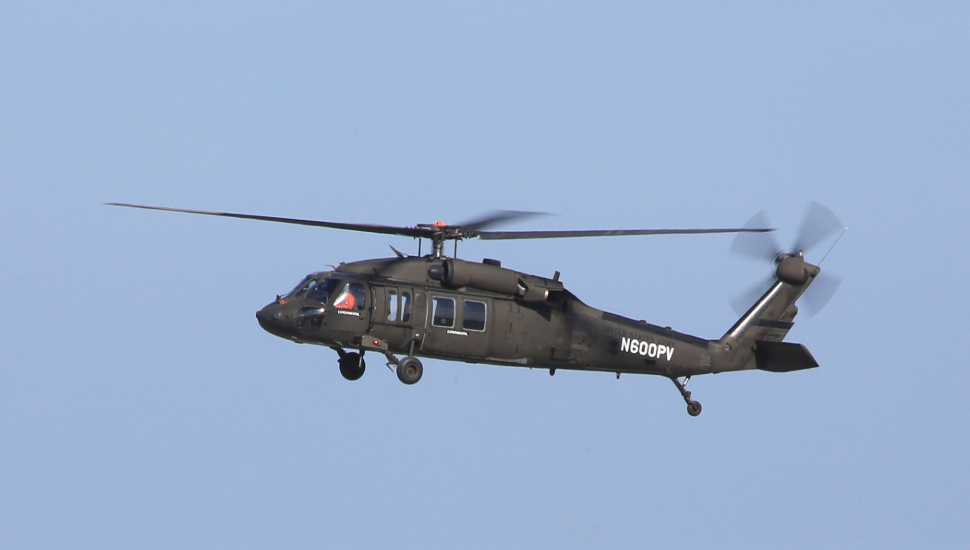Since making its first flight in May, Sikorsky’s optionally-piloted UH-60A Black Hawk has flown a combined 54.5h and tested several autonomous flight functions.
The test helicopter, which is retrofitted with a full authority fly-by-wire Optionally Piloted Vehicle (OPV) kit developed by Sikorsky, has now flown up to 150kt (278km/h), the company says.
Sikorsky says it is slowly testing additional layers of autonomy on the UH-60A, gradually allowing the OPV kit to take over the finer points of flying. Over the past several months, the company has demonstrated three levels of flight control: direct control mode; rate command attitude hold mode; and full authority control mode.

Sikorsky
“The first flight we looked at the direct mode control scheme, which is essentially the aircraft should respond like a Black Hawk aircraft. It’s direct stick-to-head with stability augmentation in the loop,” says Mark Ward, chief pilot at Sikorsky. “Direct mode is more or less to be a service mode or emergency mode. But, we found that aircraft performed quite well throughout all the speed regimes.”
The next level of autonomy assistance is rate command attitude hold mode, the company says.
“It’s a little bit more fly-by-wire-esque, meaning not directly stick-to-head,” says Ward. “When you put in a control input you are controlling a rate for attitude change and when you release the control you are capturing that attitude.”
The attitude rate commanded can be pitch, roll, pedals or collective, says Ward.
The highest level of autonomous flight tested on the aircraft do far is full authority control mode, says Sikorsky.
“Rather than commanding a rate, you are actually commanding a parameter, such as airspeed, altitude, or heading, using the control stick,” says Ward. “Think of the full authority control mode being an ultra-stable [instrument flight rules] platform, that you're going to be holding flight parameters for very long periods of time. You want to kind of set it and forget it.”
The company plans to test fully autonomous flight on the UH-60A in 2020.
Sikorsky says its OPV UH-60A can shift quickly between different levels of autonomy.
“The change from one level to the next is simply a button push away,” says Ward.
The OPV kit is based on Sikorsky’s Matrix autonomy technology, which the company has been demonstrating on a modified S-76B, called the Sikorsky Autonomy Research Aircraft (SARA). SARA uses a clutch to direct the aircraft’s manual flight control system, whereas the OPV kit is entirely fly-by-wire.
Sikorsky sees SARA as a “sandbox” for testing autonomous flight control functions, which later can be rolled out to the OPV UH-60A. By installing a fly-by-wire system in the oldest Black Hawk variant, the mechanically-controlled UH-60A, the company aims to show that it could upgrade the US Army’s entire fleet of utility helicopters.
Ultimately, the company envisions operators or third-party developers being able to create customised autonomous flight control apps to run on its OPV kit for different missions. For example, a pilotless UH-60A could be programmed to autonomously fly cargo resupply missions differently for the US Army or US Navy.
“That app would be customised to that operator’s specification, and that specification is developed through their operating rules or operating plan,” says Ward. “It really just comes down to how creative can you get in writing an application.”



















